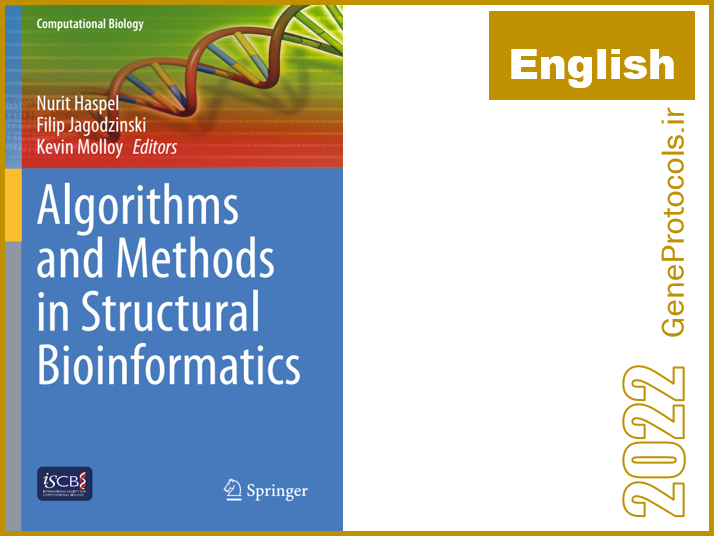

|
فهرست مطالب:
Contents
Protein-Ligand Binding with Applications in Molecular Docking ......... 1
Nikita Mishra and Negin Forouzesh
1 Introduction.................................................................... 1
1.1 Thermodynamic Basis of Protein-Ligand Interaction ................. 2
2 Computational Methods for Estimating Binding Free Energy .............. 4
2.1 Alchemical Methods .................................................... 4
2.2 Transition Path Sampling Methods..................................... 5
2.3 End-Point Methods ..................................................... 6
3 Protein-Ligand Binding Databases ........................................... 8
4 Molecular Docking ............................................................ 9
5 Conclusion ..................................................................... 11
References ......................................................................... 11
Explaining Small Molecule Binding Specificity with Volumetric
Representations of Protein Binding Sites ...................................... 17
Ziyi Guo and Brian Y. Chen
1 Introduction.................................................................... 17
1.1 Comparison Algorithms for Examining Specificity ................... 18
2 Specificity Assignment........................................................ 19
2.1 Binding Site Representations ........................................... 20
2.2 Metrics for Binding Site Comparison .................................. 21
2.3 Comparison Algorithms ................................................ 22
2.4 Statistical Models for Binding Site Comparison ...................... 25
3 Component Localization ...................................................... 26
3.1 Foundations of Structure-Based Component Localization ............ 27
3.2 Using CSG for Component Localization .............................. 30
3.3 Statistical Models for Component Localization ....................... 32
3.4 Volumetric Alignment .................................................. 34
3.5 Flexible Representations for Component Localization................ 35
3.6 Solid Representations of Electrostatic Isopotentials ................. 37
4 Discussion ..................................................................... 39
4.1 Future Directions........................................................ 40
References ......................................................................... 41
Machine Learning-Based Approaches for Protein
Conformational Exploration .................................................... 47
Fatemeh Afrasiabi, Ramin Dehghanpoor, and Nurit Haspel
1 Introduction.................................................................... 47
2 Biophysical and Empirical Methods ......................................... 48
3 Physics-Based Computational Methods...................................... 49
3.1 Molecular Dynamics .................................................... 49
3.2 Monte Carlo Based Search Method .................................... 51
4 Geometric and Robotics-Inspired Methods .................................. 52
4.1 Motion Planning Methods .............................................. 52
5 Machine Learning-Based Methods ........................................... 53
5.1 Dimensionality Reduction Techniques ................................. 54
5.2 Autoencoders ............................................................ 55
6 Toolkits for Applying Machine Learning .................................... 57
6.1 Topology and Clustering................................................ 57
6.2 Using a priori Knowledge .............................................. 58
7 Conclusions.................................................................... 58
References ......................................................................... 59
Low Rank Approximation Methods for Identifying Impactful
Pairwise Protein Mutations ..................................................... 63
Chris Daw, Brian Barragan-Cruz, Nicholas Majeske, Filip Jagodzinski,
Tanzima Islam, and Brian Hutchinson
1 Introduction.................................................................... 63
2 Related Work .................................................................. 65
3 Methods........................................................................ 66
3.1 Phase 1: Generate Exhaustive Pairwise Data .......................... 67
3.2 Phase 2: Sampling Methods ............................................ 70
3.3 Phase 3: Smooth Approximation Methods ............................ 71
3.4 Evaluation Metrics ...................................................... 74
4 Results: SVD Smoothing ..................................................... 75
4.1 SVD Approximation and Sampling Error ............................. 80
5 Results: Case Study on 2LZM ................................................ 82
6 Conclusions and Future Work ................................................ 85
References ......................................................................... 85
Detection and Analysis of Amino Acid Insertions and Deletions ........... 89
Muneeba Jilani, Nurit Haspel, and Filip Jagodzinski
1 Introduction.................................................................... 89
2 Computational Methods of InDel Detection ................................. 91
3 Computational Methods of InDel Analysis .................................. 92
3.1 Machine Learning Based Methods ..................................... 93
Contents ix
3.2 Detecting Functional and Fitness Effects of InDels on
Protein Structure ........................................................ 94
3.3 Plasticity of Proteins to InDels ......................................... 95
4 Conclusion ..................................................................... 96
References ......................................................................... 97
DeepTracer Web Service for Fast and Accurate De Novo Protein
Complex Structure Prediction from Cryo-EM ............................... 101
Dong Si, Hanze Meng, Jonas Pfab, Yinrui Deng, Yutong Xie, Jackson
Tan, Sheung Him Martin Chow, Jason Chen, and Aditi Jain
1 Introduction.................................................................... 101
2 Procedures ..................................................................... 104
3 Results ......................................................................... 107
3.1 Architecture ............................................................. 107
3.2 Prediction Evaluation ................................................... 108
3.3 UI/UX Features ......................................................... 109
4 Discussion ..................................................................... 112
4.1 Design Philosophy ...................................................... 112
4.2 Future Features .......................................................... 112
References ......................................................................... 113
مشخصات فایل
|
| عنوان (Title): |
Algorithms and Methods in Structural Bioinformatics |
| نام فایل (File name): |
716-www.GeneProtocols.ir-Algorithms and Methods in Structural Bioinformatics-Springer (2022).pdf |
| عنوان فارسی (Title in Persian): |
الگوریتم ها و روش ها در بیوانفورماتیک ساختاری |
| ایجاد کننده: |
Nurit Haspel, Filip Jagodzinski, Kevin Molloy |
| زبان (Language): |
انگلیسی English |
| سال انتشار: |
2022 |
| شابک ISBN: |
9783031059131 |
| نوع سند (Doc. type): |
کتاب |
| فرمت (File extention): |
PDF |
| حجم فایل (File size): |
3.31 مگابایت |
| تعداد صفحات (Book length in pages): |
120 |
پس از پرداخت، دانلود فایل آغاز می شود
تمامی درگاه های پرداخت ژنـ پروتکل توسط شرکت دانش بنیان نکست پی پشتیبانی می شود. نکست پی دارای مجوز رسمی پرداختیاری به شماره 1971/ص/98 ، از شرکت شاپرک و بانک مرکزی جمهوری اسلامی ایران و دارای نماد اعتماد در حوزه (متمرکزکنندگان پرداخت) از مرکز توسعه تجارت الکترونیکی وزارت صنعت معدن و تجارت است.





